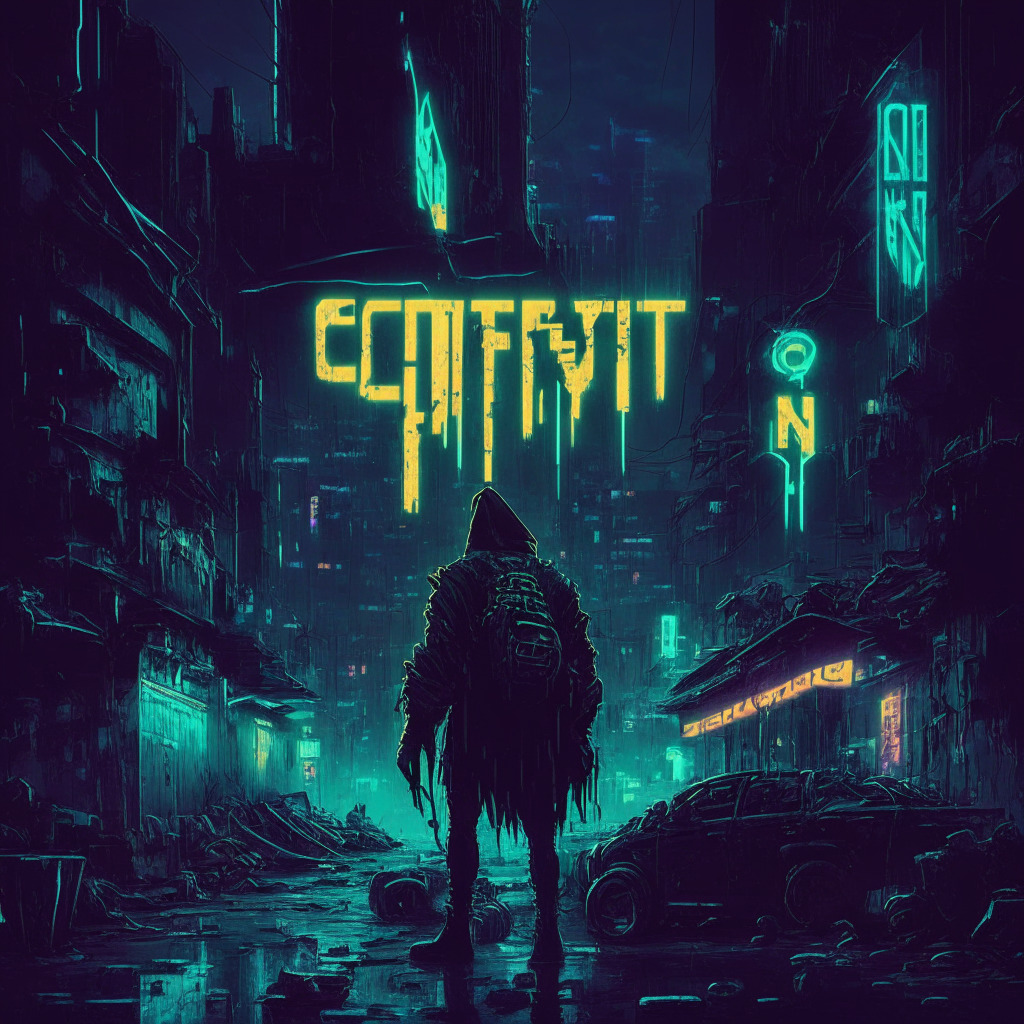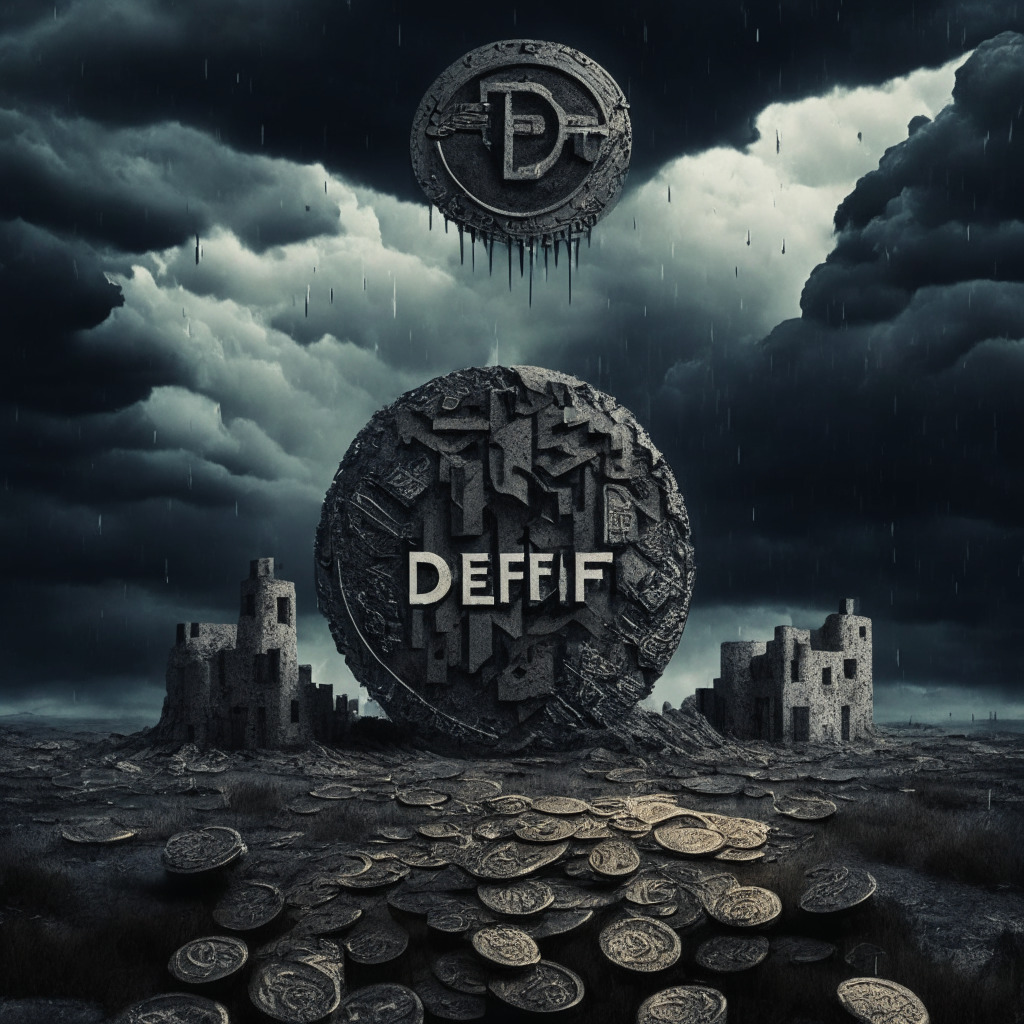The former CEO of Turkish cryptocurrency exchange Thodex, Faruk Fatih Özer, has been sentenced to 11,196 years in prison amid concerns about digital asset exchange integrity. This decision comes after Thodex shut down and Özer vanished, allegedly with $2 billion worth of investors’ assets, resulting in charges of fraud and manual laundering.
Search Results for: aave
Redefining Value: The Digital Frontier of Tokenized Real-World Assets
“Tokenized real-world assets are becoming mainstream with firms like Coinbase, Circle, and Aave forming the Tokenized Asset Coalition to promote the transition to decentralized finance. Predictions estimate tokenized assets reaching $16 trillion by 2030. Meanwhile, key financial entities globally are considering or offering crypto-related services, signifying a pivotal switch in financial systems.”
Riding the Blockchain Wave: OpenCover and Nexus Mutual Forge New Paths in Crypto Insurance
OpenCover, a decentralized insurance provider, has made its debut on Ethereum-fueled blockchain, Base, further expanding its financial capacity with Coinbase. The launch is part of a collaboration with Nexus Mutual, aiming to offer investors insurance-like coverage for the crypto industry. OpenCover intends to guard against protocol shortfalls and provides protective shield for traditional entities and forward-looking platforms.
Fostering Adoption of Traditional Assets on Blockchain: The Role of the Tokenized Asset Coalition
Crypto industry leaders, including Coinbase and Circle, form the Tokenized Asset Coalition to spur adoption of traditional financial assets on blockchain. The coalition’s aim is to bring the “next trillion dollars of assets” to blockchain technology through education and advocacy, fostering the adoption of public blockchains, asset tokenization, and institutionalized decentralized finance (DeFi). This initiative predicts a more efficient, cost-effective, and transparent system with the adoption of tokenized assets.
Scaling the Ethereum Blockchain: The Promising Rise and Potential Pitfalls of Layer 2 Solutions
To combat increasing transaction times and fees, Ethereum is utilizing layer 2 scaling solutions, resulting in faster transaction speeds, lower costs, and maintaining security. These networks enhance throughput and transaction rates, drawing significant attention. However, layer 2 chains also face criticism, largely from crypto users maximizing profitability through airdrop farming.
Decentralized Finance (DeFi): Emerging Resilience and Potential in an Evolving Financial Ecosystem
“Decentralized finance (DeFi) replaces traditional credit risk with ‘smart contract risk’, making consumer’s credit history irrelevant. DeFi platforms like AAVE base borrowing power on collateral value. Despite challenges, DeFi’s transparency and automation of intricate payoffs position it for substantial growth and adoption.”
The Paradoxical Rise of Liquid Staking: A Shift in DeFi Amid Regulatory Pressures and Yield Quests
“Liquid staking protocols, particularly Lido, have seen a massive rise recently despite an overall downturn in the DeFi industry. The popularity of liquid staking, driven by regulatory pressures and attractive yield returns, suggests a potential shift within the DeFi ecosystem.”
Decoding the ‘Ethereum Supreme Court’ Vision: Innovative Shield or Expensive Experiment?
Alex Gluchowski of Matter Labs proposes the formation of an ‘Ethereum Supreme Court’, an on-chain hierarchical court system working alongside current judicial structures to safeguard the Ethereum network against undue external interference. This system aims to handle various issues like disputes and emergency upgrades but its success depends largely on social consensus.
Ethereum Staking Thrives Amidst DeFi Assets’ Notable Slump: A Dual Reality in Crypto Sector
Despite substantial withdrawals from the DeFi sector and major crypto exchange meltdowns, Ethereum staking through platforms like Lido and Coinbase has surged. However, the value locked in DeFi protocols has dropped significantly from a peak of $178 billion in November 2021, to under $38 billion today. Staking services are becoming increasingly attractive to investors due to potential profitability and decreased protocol risks.
Blockchain Revolution: How Friend.tech Makes Huge Strides in Crypto Market in Less Than a Month
“Friend.tech, a Twitter-associated blockchain application recently outperformed several large-scale projects by marking a revenue of $840,889 over a 24-hour cycle. Within 30 days post-launch, its cumulative revenue ascended to $2.95 million. The app tokenizes crypto personalities on Twitter, enabling users to buy and sell ‘shares’ of these individuals.”
Navigating SEC Exemptions in Blockchain: A Deeper Dive into Maple Finance’s Achievement and DeFi Risks
This article explores the landscape of blockchain regulations, focusing on Maple Finance’s recent exemption from SEC regulations. It highlights the growth of the DeFi sector, constant market opportunities, network vulnerabilities and the importance of security and regulatory compliance. The piece also discusses the qualification for individual investors in the U.S.
Cryptocurrency Beyond Wealth: Exploring Real-World Uses of Crypto Tech
“Crypto’s primary use is still to amplify wealth, but its potential extends well beyond that. Blockchain technology can revolutionize self-custody of assets, enable peer-to-peer connections, and spur innovative business models. Overcoming rampant speculation to highlight crypto’s actual utility is crucial.”
Curve Finance’s CRV Stolen Funds: A Tale of Recoveries, Risks and Potential Returns
The recent 7% rally of Curve Finance’s native token, CRV, is linked to the return of stolen funds by a hacker who had drained more than $50 million from multiple DeFi protocols. Although anticipation for full funds return has risen, the heist has highlighted vulnerabilities in decentralized investor fund security, shaking confidence, and posing a potential obstacle for CRV’s future growth.
The Impact of Curve Finance’s $52M Hack on CRV’s Market Performance and Future Prospects
“Following a cyberattack that exploited a flaw in the Vyper programming language, Curve Finance’s native token, CRV, experienced a 3% increase but remains 18.5% lower than its pre-hack value. Curve Finance saw a sharp drop in confidence, offering the hackers a 10% bounty for stolen funds returned by August 6, with potential market-reaching consequences.”
Navigating the Crisis: Curve Finance Founder’s Struggle with $80 Million On-Chain Debts
Michael Egorov, the founder of Curve Finance, faces a potential crisis due to approximately $80 million on-chain debts to several lending platforms. Despite selling 72 million CRV tokens to mobilize funds, the risk remains high, especially if the CRV price drops dramatically.
Decoding the Crypto Future: Navigating Block Reward Halving and DeFi’s Evolution
The Bitcoin block reward halving presents potential volatility for miners but also shows signs of a promising future for crypto, with an anticipated $10 trillion market cap. Optimism comes from improvements in infrastructure, streamlined mining equipment acquisition, and burgeoning institutional interest. Despite recent DeFi setbacks, such as the Curve Finance hack, there’s hope from ongoing resilience and innovative strategies designed to strengthen the sector.
Alibaba’s AI Rivals Meta’s Llama 2: Unpacking the Open Source Drama and Consequences on DeFi
Alibaba has disclosed two novel open-sourced AI models, Qwen-7B and Qwen-7B-Chat, aiming to enrich AI operations. These models support the academia, researchers, and commercial institutions, offering code, model weights, and documentation access. However, large corporations need a license for use.
Navigating the Storm: An Examination of the Recent Turbulence in DeFi and Its Financial Implications
“Gauntlet, a risk management firm, suggests a zero value for the Loan-to-Value (LTV) ratio of CRV tokens on Aave, a renowned lending and borrowing platform. This follows a drop in CRV liquidity, represented by a $158 million collateral account, and aims to prevent potential loan borrows. This controversial move traces back to an exploit on Curve Finance, significantly impacting CRV’s price and threatening liquidation of some assets.”
Curve Finance Hack and the Tentative Balance in DeFi’s Future
“The DeFi segment suffered a setback when Curve Finance, an Ethereum-based decentralized exchange, was hacked, leading to a 20% price drop in its token (CRV). Founder Micheal Egorov’s substantial loans backed by CRV triggered a panic-induced price drop. However, Egorov’s partial loan repayments and an intriguing pattern in the derivatives market suggest a potential near-term rally for CRV.”
The Rise and Crisis of DeFi: A Close Brush with Disaster and Its Implications
“The DeFi community recently faced a potential crisis when Curve Finance’s founder risked significant funds on his platform’s tokens. This precarious scenario could have toppled the entire DeFi sector. The incident has sparked questions about the system’s integrity, transparency, and overall stability, reminding us of the inherent risks of the rapidly evolving DeFi world.”
Unraveling DeFi Instability: Curve Founder’s Actions as Catalyst for Market Risks
Michael Egorov, founder of Curve Finance, destabilized on-chain lending markets by leveraging his CRV holdings for large token loans, potentially triggering a wide-scale liquidation and distressing debts within the DeFi ecosystem. The situation underscores the importance of robust response strategies in the decentralized finance world.
Decoding Term Finance: Navigating Loan Volatility in the DeFi Landscape
“Term Finance, gaining traction in the decentralized finance (DeFi) realm, offers short-term, fixed-interest rate loans on the Ethereum mainnet. This innovative model provides a solution to variable-rate crypto loans’ unpredictability, with assurances for borrowers and lenders through a weekly auction model.”
Navigating the Unsettled Seas of Crypto World: Egorov’s Debt & Nigeria’s Binance Battleground
“The world of decentralized finance (DeFi) is filled with both promise and risk. Recent concerns about Curve Finance’s founder’s $100 million debt, backed by 400 million CRV tokens, could trigger a potential DeFi crisis. Also, Nigeria’s warning to Binance about operating without a license heightens risk levels and shows the need for vigilant crypto landscape and market monitoring.”
Navigating Debt Crisis: How Curve Creator’s New Liquidity Pool Could Stabilize CRV Tokens
Michael Egorov, creator of Curve, has introduced a new liquidity pool, crvUSD/fFRAX, on his decentralized exchange to mitigate potential debt crisis and repay a curve token (CRV)-backed loan. The pool, bolstered with 100,000 CRV rewards, is aimed at decreasing the utilization rate to prevent unsustainable interest charges, attracting more liquidity into the system and providing respite from daunting debt levels.
The Brewing Storm in Crypto: CRV Tumbles, Sparks Fuels Volatility and Widespread Impact
Curve’s native token, CRV, continues to tumble potentially causing trouble for Michael Egorov, the founder of decentralized exchange Curve. With the CRV hitting a low unseen since November, traders fear Egorov’s large borrowing positions against Aave and Frax. This widespread concern is causing a bearish outlook in the crypto market and future of Curve.
Crypto Market Stability vs Lending Protocol Risk: A Tale of Two Worlds Unraveling in Summer Heat
“Major cryptocurrencies Bitcoin and Ether appear stable despite market turmoil. Contrarily, a significant blow threatens lending protocols, especially the CRV token linked to Curve Finance’s DAO. The founder’s position drifts towards liquidation, leading to possible cascades of liquidations and a flood of assets into the market.”
Apple App Store Guidelines: A Roadblock for Blockchain Tech and NFTs?
In an unfolding narrative around Apple and its App Store guidelines, questions arise about whether these constraints are hampering blockchain technology and non-fungible tokens (NFTs). With inconsistencies in their approach to crypto applications, the company is accused of stifling potential while ensuring a prolonged revenue stream.
Decentralized Exchanges: Perils and Promises Unleashed by Curve Finance Exploit
“After a significant exploit at decentralized exchange Curve Finance, concerns among traders increased. Despite this, the perpetual futures markets remained steady. The incident led to a shift in trading focus onto Uniswap’s UNI token, suggesting traders are evaluating decentralized exchanges more meticulously, considering all facets before committing.”
Crypto Innovation vs Security: Unpacking the Curve Heist and Its Implications for DeFi
The cryptocurrency world faces another heist, jeopardizing more than $100 million worth of cryptocurrency from the DeFi ecosystem on Ethereum, Curve, due to an exploitative “re-entrancy” bug in Vyper. Future projects grappling with Vyper could encounter similar vulnerabilities. The incident arouses essential security considerations amidst the pursuit of progress in the crypto world.
Global Tours of Tokenized Real-World Assets: Exploring Blockchain Opportunities and Challenges
This week spotlighted tokenized real-world assets (RWAs), an area projected to reach a $16 trillion market by 2030. Companies like Avalanche are encouraging this trend, while nations like Spain, Colombia, and Hong Kong innovate with equity tokens, decentralized finance, and real estate asset tokenization. Blockchain adoption shows vast potential for growth and inclusivity.
Bitcoin ETPs’ Surge, SG Forge’s Crypto License, and Telegram’s Bond Issuance: July’s Crypto Highlights
“Market research reveals a surge in crypto investors’ funding into Bitcoin ETPs, leading to a $757 million increase. Concurrently, Societe Generale’s SG Forge becomes the first company in France licensed for crypto services. Additionally, Telegram issues $270 million in bonds amid massive growth, while the newly launched stablecoin GHO by Aave indicates market receptivity towards new crypto offerings.”
Unraveling Chainlink’s Cross-Chain Interoperability Protocol – Future of Banking or Risky Business?
“Chainlink has unveiled its Cross-Chain Interoperability Protocol (CCIP) to manage cross-chain applications creation and services, now available for early users across several blockchain platforms, including Ethereum and Polygon. This protocol fulfills a substantial role in Chainlink’s partnership with international money transfer network, SWIFT.”































